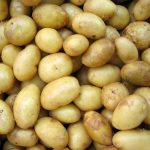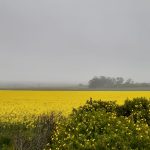
Introduction
Malting barley is a particular type of barley used in making beer, flavourings, and extracts. Only a portion of the malting barley planted each year has the specific qualities needed to be selected for malt. To produce malt, barley kernels are soaked, germinated, and dried. Although the kernels look the same on the outside, this process causes chemical changes inside. The malted barley can now be used to make malt extract, beer and flour.
Like regular barley, hulless barley does have a hull, but it is only weakly attached to the kernel and therefore easily removed during harvesting. The hull is the inedible outer coating of the kernel that protects the seed like a jacket. Hulless barley is convenient and is becoming increasingly popular both for human nutrition and as feed for livestock.
Barley grain may be milled to produce barley flour, flakes, and bran. Milling involves crushing the seed kernel and separating the outside (bran) from the endosperm, which is the inside part of the kernel where food is stored to nourish a new plant. The endosperm is then ground to make flour. To improve its digestibility, barley grain is cracked or rolled for cattle feed and ground to make feed for pigs and chickens.
Barley straw is the dried stems of the barley plant after the head that holds the grain kernels has been removed. Straw is often used as a soft, dry bed for livestock. It can also be made into building materials, paper and fibre board. To make silage, the entire plant is cut down, piled, compacted, and then allowed to ferment. Fermentation preserves this highly nutritious feed for beef and dairy cattle.
Source: Barley Market Value Chain Profile. Find it on the Directorate Marketing web pages at www.old.dalrrd.gov.za.
Contents
International business environment
- The top producers of barley is the EU, followed by Russia, Australia, Turkey, Canada and UK. The top exporters of barley are the EU, Australia, Russia, Argentina and Canada. The biggest importers are China, Saudi Arabia, Iran, the EU and Japan (USDA, 2023).
Further reading:
- The annual Bureau for Food and Agricultural Policy (BFAP) Baseline includes an overview of the global barley situation and trends.
- Barley is included in the “Grain: World Markets and Trade” circular available from the United States Department of Agriculture (USDA). Statistics of global role players (countries) are listed. Production, consumption, exports etc are looked at. This circular is available on the Foreign Agricultural Service Home Page. The address is www.fas.usda.gov.
South Africa: import and export
- Under the EPA (see “Exporting” page), 10 thousand tonnes can be imported duty free from the EU.
- Export/import figures can be found on www.sagis.org.za. The Monthly Bulletin contains updated information.
Local business environment
Barley is mainly produced in the South Western Cape under dry land conditions. The remainder of the production is in the Northern Cape under irrigation (Vaalharts, Douglas, Barkley West and Rietrivier/Modderrivier). Barley is also grown by some small-scale farmers at Taung in the North West Province.
Normally between 70 and 90% of barley produced in the south Western Cape is suited for malting purposes. This figure is directly dependent on the climatic conditions during the growing season. A record crop might be followed by several seasons of bad climatic conditions. It was to stabilise the fluctuations caused by total production in one geographical area that the crop is grown under irrigation in areas other than the south Western Cape.
There is one major barley buyer in South Africa, namely ABInBev, previously the South African Breweries Maltings (Pty) Ltd (SABM). Barley producers have a guaranteed market for a specified tonnage of malting quality barley per year, and a pricing mechanism linked to the wheat futures. The COVID-19 lockdowns placed ABInBev under financial pressure and reduced malting capacity. The expected growth of an additional 20 000 hectares over the next 10 years remains below 2019 and 2020 levels, and minimal exports are expected owing to AB InBev’s domestic procurement commitments (BFAP, 2023).
Barley production forms part of a crop rotation cycle and usually supplements a livestock component, like dairy or sheep. After the harvest, the animals either graze the stubble in the land, or it is baled for them. This “increases the marketable weight of livestock without any significant additional cost” (Absa, 2021). During the lockdowns, the resultant surplus barley was sold for feed at around 35% below barley sold for malting purposes (BFAP, 2021).
The volatility of the maize price (the result of the rand-dollar exchange rate) affects the price of feed barley.
The barley marketing season in South Africa commences on 1 October and ends on 30 September the following year. A statutory levy in terms of the marketing of Agricultural Products Act is applicable.
Further reference:
- Absa Agribusiness. 2021, June 25. “An overview of South Africa’s barley industry”. Farmer’s Weekly, pp. 26, 27.
- The annual BFAP Baseline Agricultural Outlook includes a look at the gross margin performance between winter crops in the Western Cape – wheat, barley and canola. Find the document at www.bfap.co.za.
- Statistics (e.g. crop estimates, export/import etc) may be found on the Department of Agriculture, Land Reform and Rural Development (DALRRD) website – www.dalrrd.gov.za – and on the South African Grain Information Service (SAGIS) website – www.sagis.org.za.
Farmer points of interest
Consult the tables in the Production Guidelines, issued by the ARC-SG (see “Websites & publications” heading).
The following notes are summarised from the SG’s Guideline for the Production of Small Grains in the Summer Rainfall Region, written by GJ Kotzé.
Soil Preparation
It must be emphasised that a fine and even seedbed be prepared. An uneven seedbed will cause uneven development of the crop and in the end, uneven ripening and quality.
The barley cultivars Puma and Cocktail are currently the cultivars for commercial production of malting barley under irrigation. The seed is treated with a fungicide as well as an insecticide. This will protect it for some time against insects during storage before planting and against fungal diseases for the first couple of weeks after it is planted.
Planting Practices
It is important that barley is not planted deeper than 3cm. The deeper you plant it the more energy is being used for germination and tillering is therefore restricted.
Depending on the status of the seedbed, you should plant between 60kg to 100kg for every ha. The average recommended density is 80 kg to the ha.
Fertilisation
The crop’s minimum acidity requirement must be met. For barley, the soil acidity requirement is a pH of 5,5 (KCI medium). Lime application should then be to create a pH of 5,5 to 6,0. Too high a pH could lead to zinc and manganese deficiencies, and barley is very sensitive to this.
A soil sample will tell you how much phosphorus to apply. If there is more than 30 mg of citric acid soluble phosphorus in a kg of soil, then you can apply 12 to 15 kg to every ha. 6 kg per ha can be applied where the sample shows your soil to be below 20 mg per kg. 4 kg phosphorus per ha can be applied for each 1 mg/kg where the analysis is below 30 mg/ha.
According to most research, top dressing of nitrogen (nitrogen fertilisation applied after emergence of the crop) benefits the crop, especially where overhead irrigation is being used, and where the soil is lighter and sandier. For the best yield, a total nitrogen fertilisation of 130 kg to 150 kg per hectare should be given.
The first nitrogen is applied just before or during planting. Two thirds of the total nitrogen that you will give the crop should be then while the rest is applied from 6 weeks after emergence till as late as the flag leaf stage, depending on the clay percentage of the soil.
For a more detailed exploration of fertilisation, see the Guideline for the production of small grains in the Summer Rainfall Regions mentioned under “Publications & Websites”.
Weeds
Barley is very sensitive to the competition of weeds. Sort out those weeds as soon as they germinate! Hoelon and Grasp are the only herbicides to use for controlling grass weeds. Never use Topic and Puma on barley. In fact, make sure you read the label because only herbicides registered specifically for barley should be used. Barley is also very particular about the dosage. If you apply too much herbicide, your barley can be damaged. If you apply too little, you stand the risk that the particular weeds can build up resistance to the specific herbicide.
Pests
The Russian wheat aphid and some other plant aphids are natural enemies of barley. If they appear there early, apply an insecticide too when you are using the herbicide. Bollworm can also be a problem and will lead to your crop being down-graded. If 3-4 bollworms are present in a meter row, apply a chemical treatment.
Fungal Control
It is important to harvest the crop as soon as it is ready (13% moisture content) so that the grain is not exposed to rain during harvesting. Fungal contamination (and with it, toxic substances which are not good for human or livestock consumption) can occur when the crop is exposed to rain during harvesting.
Irrigation
Skillful irrigation can give you an optimum crop – yield and quality. It is important not to stop irrigating too early (the last irrigation should be given when the whole plant is nearly discoloured).
Harvesting
Excessively fast drum speeds and excessively tight concave settings should be avoided when harvesting. It is essential that the grain is not skinned.
The barley must be harvested in bulk and delivered at the depot as stipulated on the contract or as communicated during the growing season. Here it is sampled, classified and graded. The producer then gets paid according to quality (there is a sliding scale system) and quantity.
Source: Willem Otto, ARC-SG, and the SG’s Guideline for the Production of Small Grains in the Summer Rainfall Region.
For the newcomer
- Cordaid (previously the ICCO Cooperation) is running BE-FED, a project funded by Heineken, Soufflet & the Dutch government, for emerging farmers to produce malt barley for Heineken beer in South Africa. See www.icco-cooperation.org/en/project/barley-emerging-farmers-economic-development.
- The ARC-Small Grains (SG) runs a smallholder mentoring programme.
- Find ARC-SG and other role player contact details under the role players heading. Grower guidelines by the South African Barley Breeding Institute and others are listed under the “Role players” heading.
National strategy and government contact
Barley featured in a previous Industrial Policy Action Plan (IPAP) when the then Department of Trade and Industry (the dti) report back on what had been accomplished in the agro-processing sector. Government, collaborating with the Foundation for African Business and Consumer Services (FABCOS) assisted in developing an incubator farm for barley production in Kimberly through R20m support it provided to Cape Malting House.
Role players
Further reference:
- For a comprehensive list of role players go to www.sagis.org.za – take the “List of Co-workers” and then “Barley” menu options.
Websites and publications
- Visit the websites listed earlier on this page. Role players like Overberg Agri Bedrywe have presentations on barley on their websites.
- In addition to various reports, the following guidelines can also be downloaded from www.sabbi.org, website of the South African Barley Breeding Institute: (i) Guidelines for the Production of Malting Barley under Irrigation (ii) Production of Malting Barley: Winter Dryland (iii) Better Barley, Better Beer manual [international best practice guidelines for barley producers]
- The Guidelines for the Production of Small Grains in the Summer Rainfall Region and the Guideline for the Production of Small Grains in the Winter Rainfall Region are highly comprehensive and essential publication. Barley production is included in the notes. The publication may be downloaded in English or Afrikaans from www.arc.agric.za.
- CD Roms from the ARC-PHP (Plant Health and Protection) include: (i) Crop Pests, Vol. 4: Field Crops and Pastures Pastures (ii) Medically Important Spiders And Scorpions Of Southern Africa. Write to booksales [at] arc.agric.za or infopri [at] arc.agric.za.
- Available from the ARC-Agricultural Engineering (ARC-AE) is the booklet “Agro-processing of Cereal Crops Vol. 3 (Barley, sesame, poppy seed, rye)”. Visit www.arc.agric.za or call 012 842 4017.
- Consult the AgriSETA Learner Guide Primary Agriculture “Harvesting agricultural crops”.
- The BFAP Baseline Agricultural Outlook includes notes on barley production and graphs showing barley production, consumption, trade and producer prices. Find these at www.bfap.co.za.
- Some grower notes , “Production guidelines barley”, can also be found at www.dalrrd.gov.za.
- www.sagis.org.za – SAGIS’s website: National stocks, producer deliveries, import, exports, consumption, weekly parity prices, etc. Historical information regarding this crop can also be found.
- An annual Barley Market Value Chain Profile used to be available on the Directorate Marketing web pages at www.dalrrd.gov.za.
Some articles
- See our blog “Farmsol and SAB committed to investing in a food secure future” (2022, October).
- Absa Agribusiness. 2021, June 25. “An overview of South Africa’s barley industry”. Farmer’s Weekly, pp. 26, 27.
- Luckhoff P. 2021, January 27. “Alcohol ban: Crisis looming for barley farmers reliant on beer production”. 702. Available at www.702.co.za/articles/407238/alcohol-ban-crisis-looming-for-barley-farmers-reliant-on-beer-production
- The National Agricultural Marketing Council (NAMC) TradeProbe 83 (November 2020) includes “Exploring global market opportunities for South Africa’s barley crop”.
- Sihlobo W. & Kapuya T. 2020, September 8. “SA is flush with barley and needs to find new export markets for it” . Business Day. Available at www.businesslive.co.za/bd/opinion/2020-09-08-sa-is-flush-with-barley-and-needs-to-find-new-export-markets-for-it/
- Van der Walt J. 2020, February 3. “Empowerment trust banks on barley”. Farmer’s Weekly. Available at www.farmersweekly.co.za/agri-business/empowerment/empowerment-trust-banks-on-barley/



Share this article








